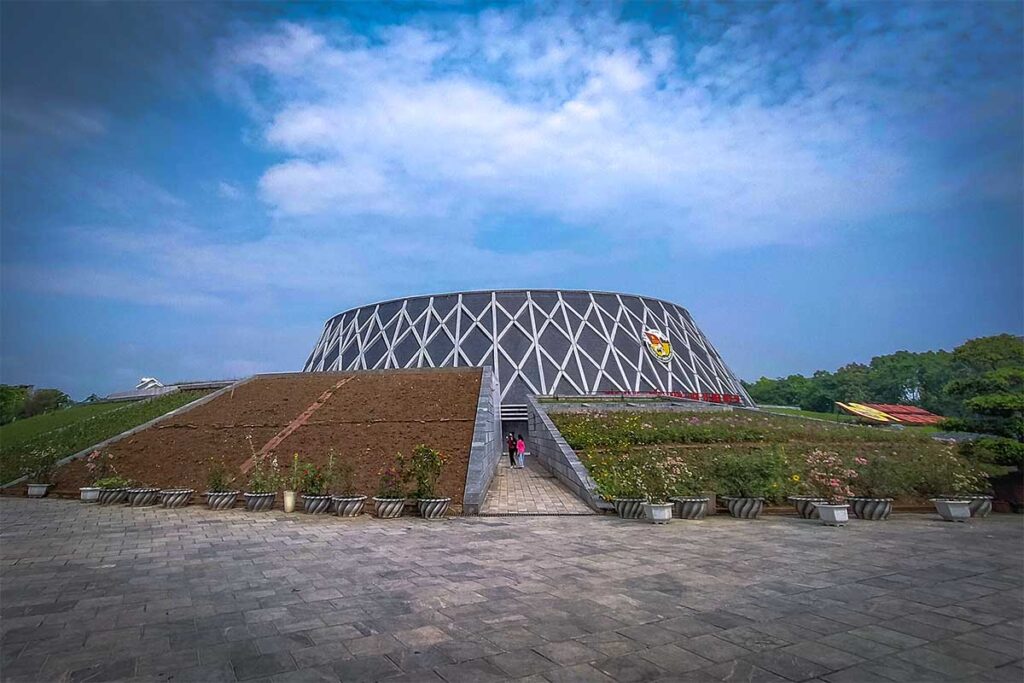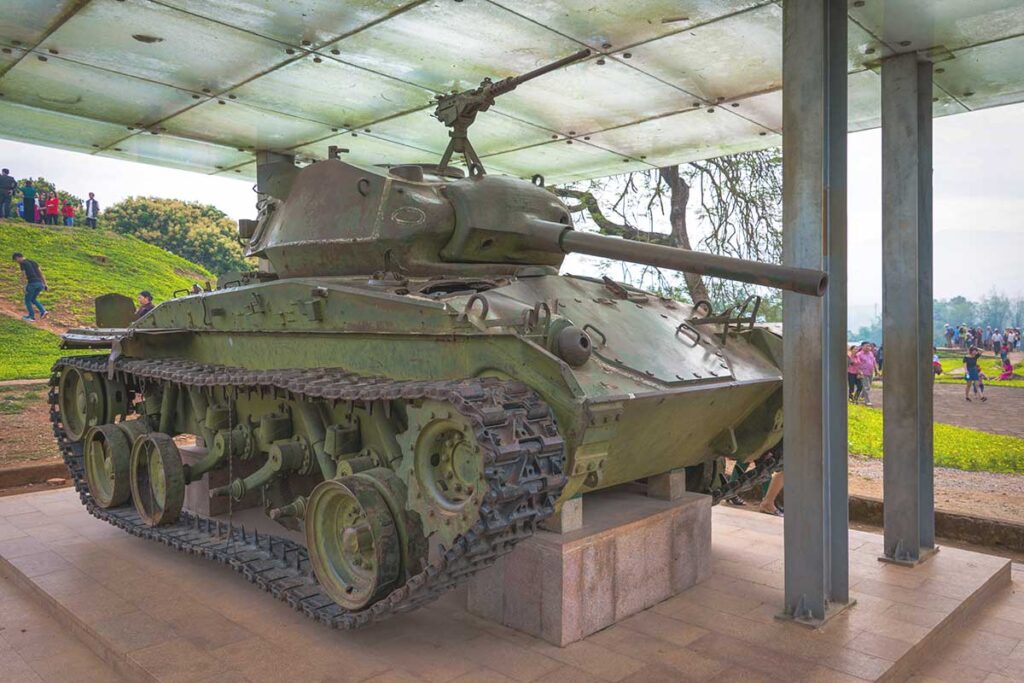What is the Dien Bien Phu Museum About?
The Dien Bien Phu Victory Museum tells the story of one of the most important battles in Vietnam’s modern history. For much of the late 19th and early 20th centuries, Vietnam was part of French Indochina—a colonial territory controlled by France. During this time, many Vietnamese resisted foreign rule, and decades of unrest eventually led to full-scale war.
In 1954, the Battle of Dien Bien Phu became the decisive turning point. Vietnamese forces launched a 56-day siege against a heavily fortified French base, ultimately forcing a French surrender. This victory ended France’s colonial presence in Vietnam and led to the signing of the Geneva Accords.
The museum was created to preserve and present the history of this battle, showcasing how a remote valley in the northwest became the setting for one of the most significant anti-colonial victories of the 20th century. It’s not only an important chapter in Vietnam’s past but also a symbol of global decolonization movements.
Architecture and Layout
The Dien Bien Phu Victory Museum stands out with its bold, modern design inspired by the camouflage helmets worn by Vietnamese soldiers during the battle. The shape of the building is both symbolic and striking—rounded, low-slung, and blending into the landscape like a military outpost.
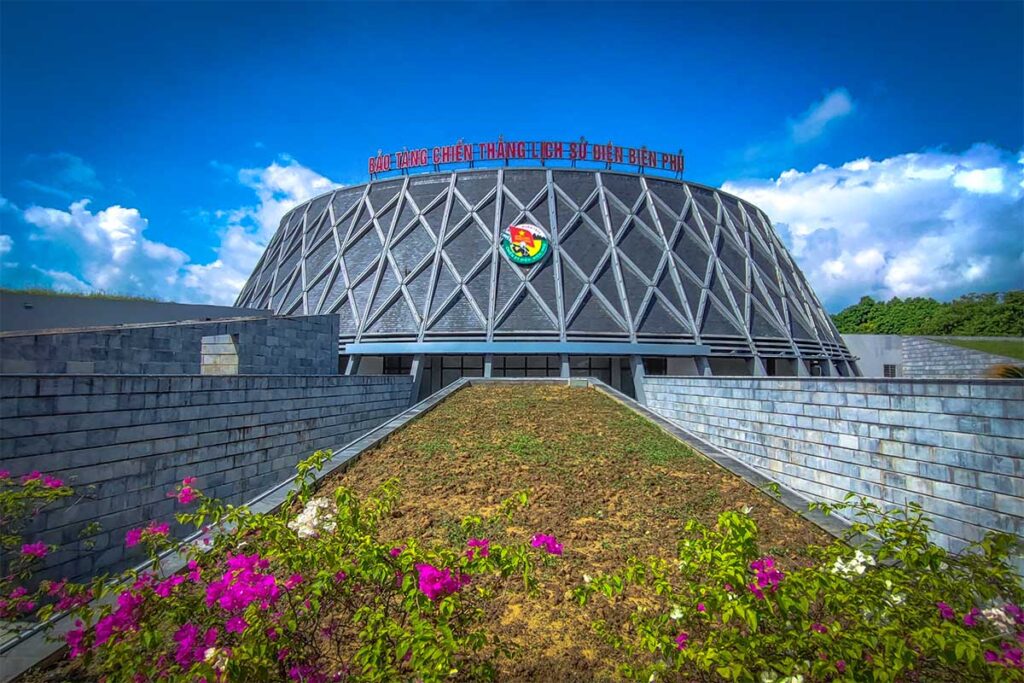
The layout reflects elements of the battlefield itself. Concrete grooves, spiral paths, and sloped landscaping evoke trench systems and topographic lines, connecting the architecture directly to the historical setting.
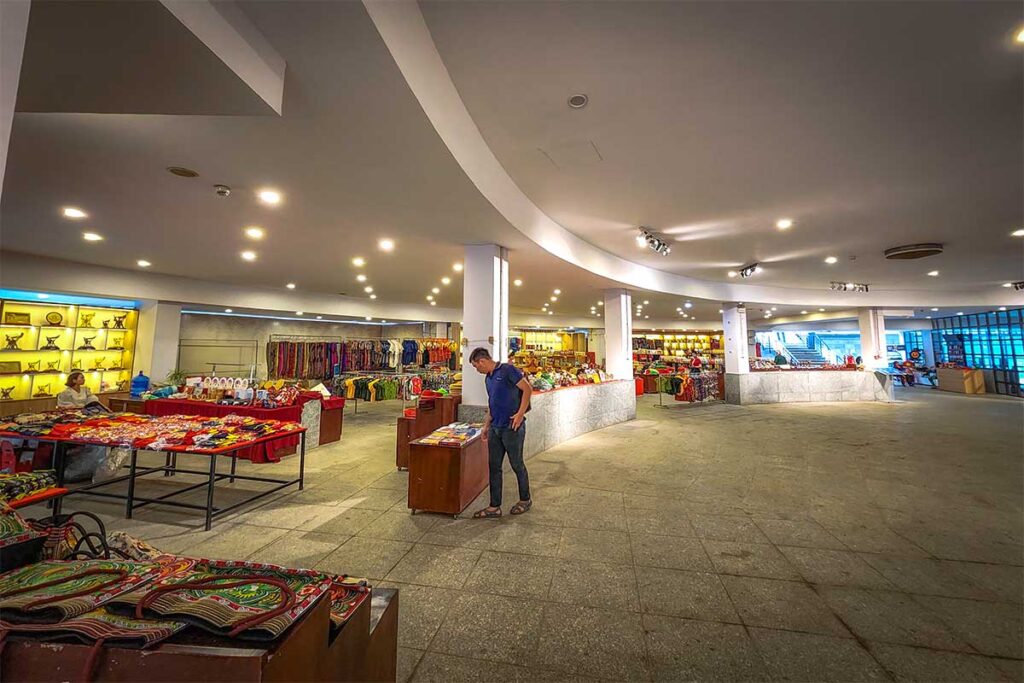
The museum has two main levels. The underground floor serves as the reception area and houses some functional spaces, while the upper floor is dedicated to the main exhibition hall and the panoramic painting. The design is clean, bright, and well-maintained, making it easy to explore even if you’re not a typical museum-goer.
Highlights of Dien Bien Phu Victory Museum
The museum isn’t large, but it’s well-organized and has a few standout features. Below are the key highlights to look out for during your visit:
1. The panoramic painting
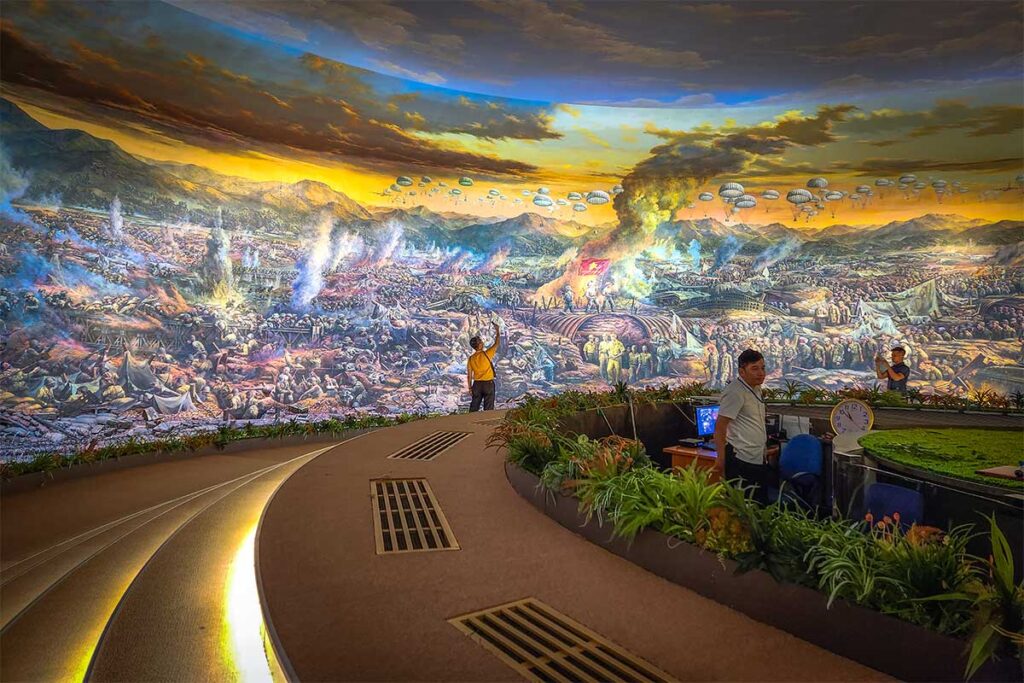
The absolute centerpiece of the museum is a massive 360-degree oil painting that immerses you in the Battle of Dien Bien Phu. The canvas is 132 meters long and 20.5 meters high, making it one of the largest war-themed panoramas in the world.
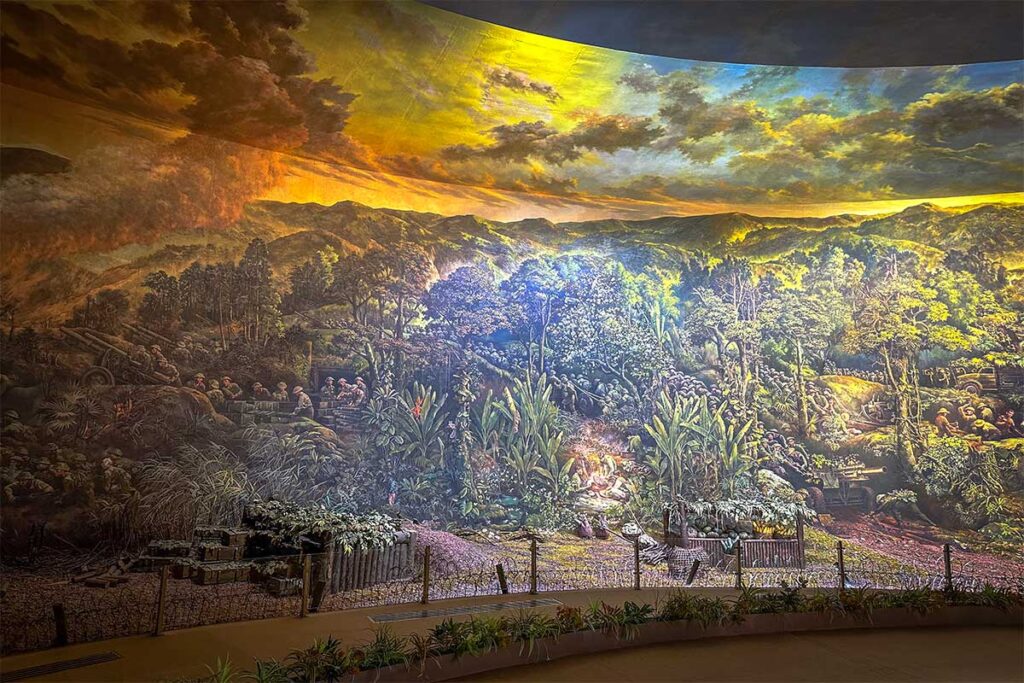
The painting is divided into four segments: the national mobilization effort, preparations for battle, the combat itself, and the final victory. Raised elements and lighting effects bring the scene to life with surprising depth.
You must remove your shoes before entering, and the room is air-conditioned and quiet—adding to the immersive feel.
Honest note: This is the main reason most people visit. The rest of the museum is good, but this is what stands out most.
2. Chronological War Exhibits
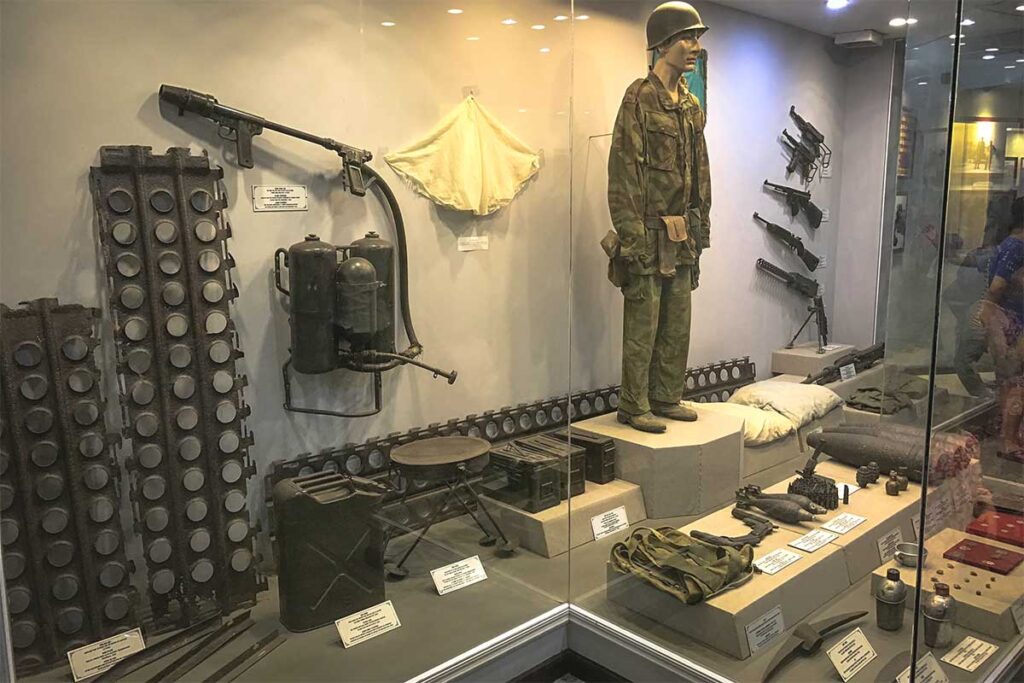
The main hall features over 1,000 items, including wartime documents, photographs, campaign maps, and written accounts. Everything is arranged in chronological order, helping visitors understand the background of the battle, how it unfolded, and its broader impact.
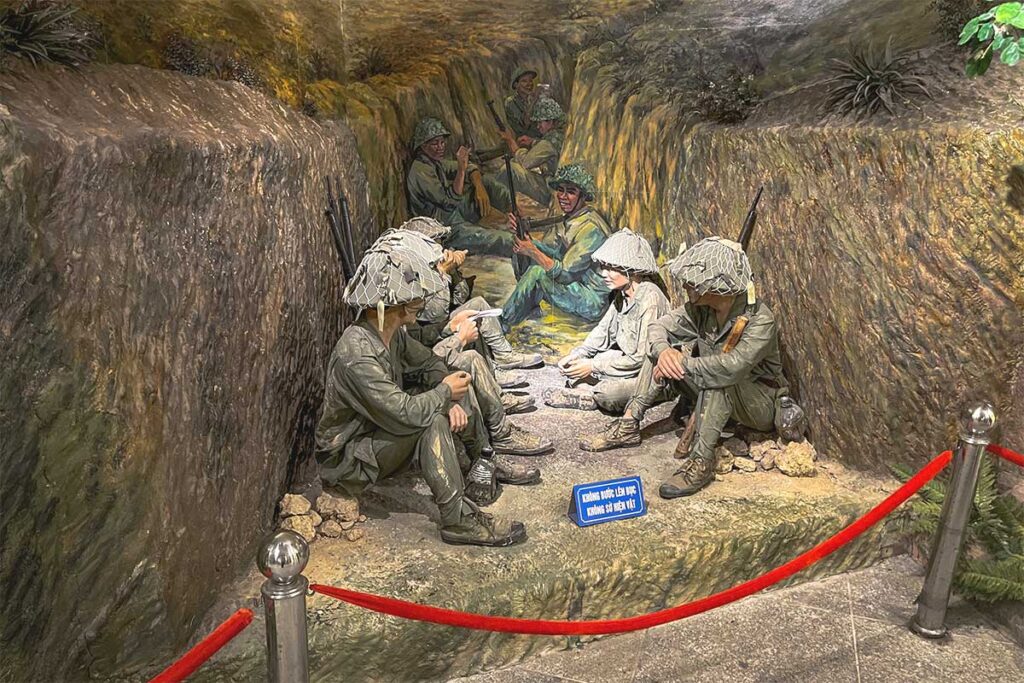
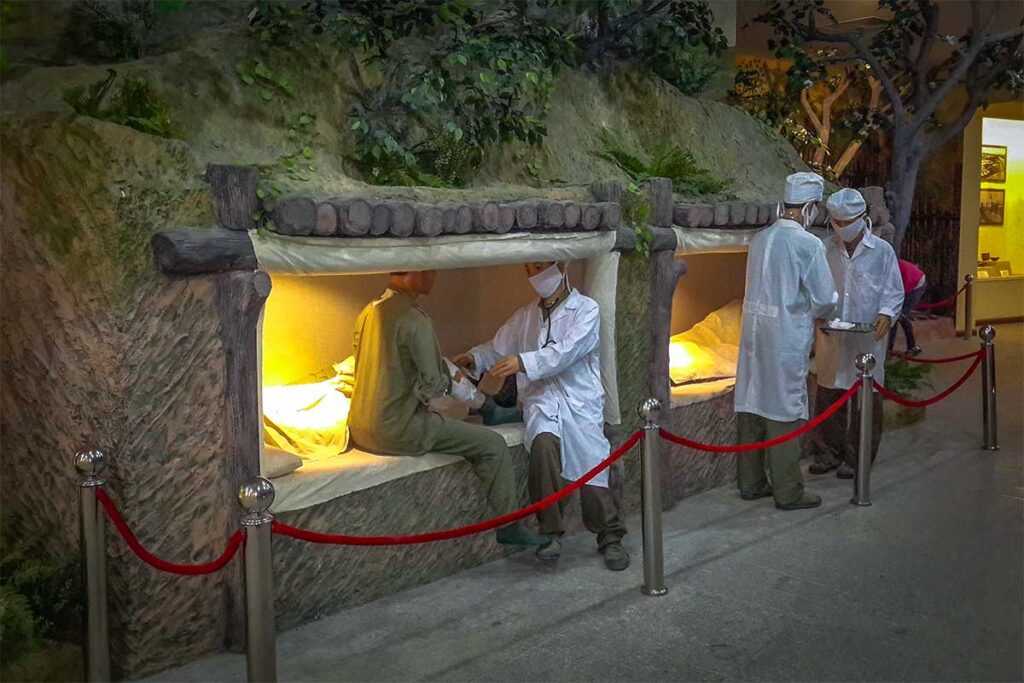
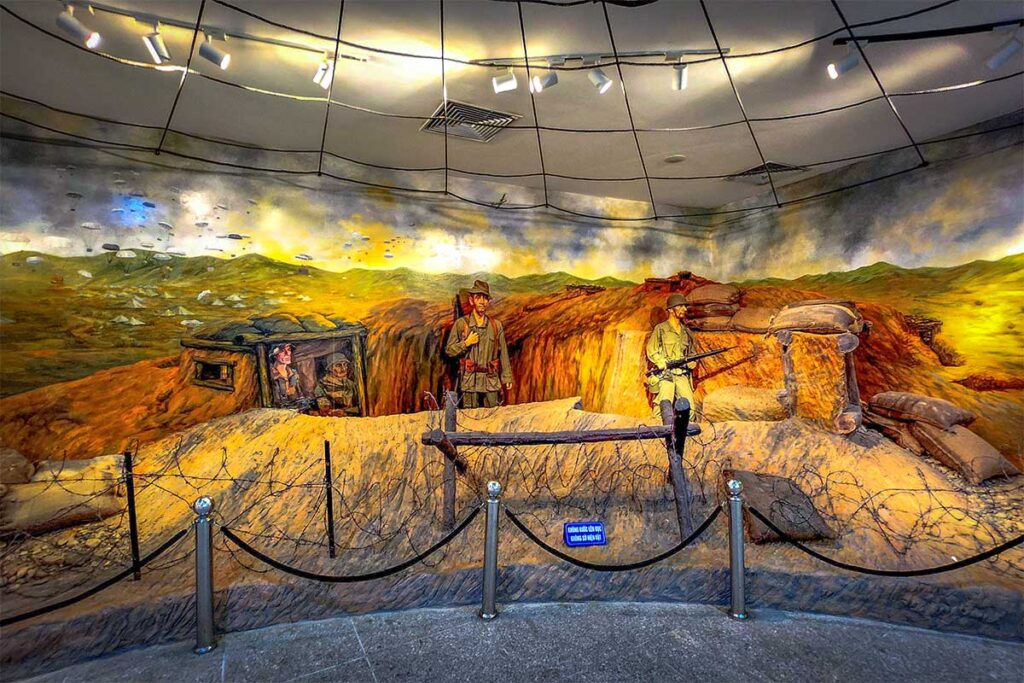
There’s enough to interest both casual visitors and those with deeper interest in history, without being overwhelming. If you don’t read every panel, you can still take away the key points.
3. Personal items and stories
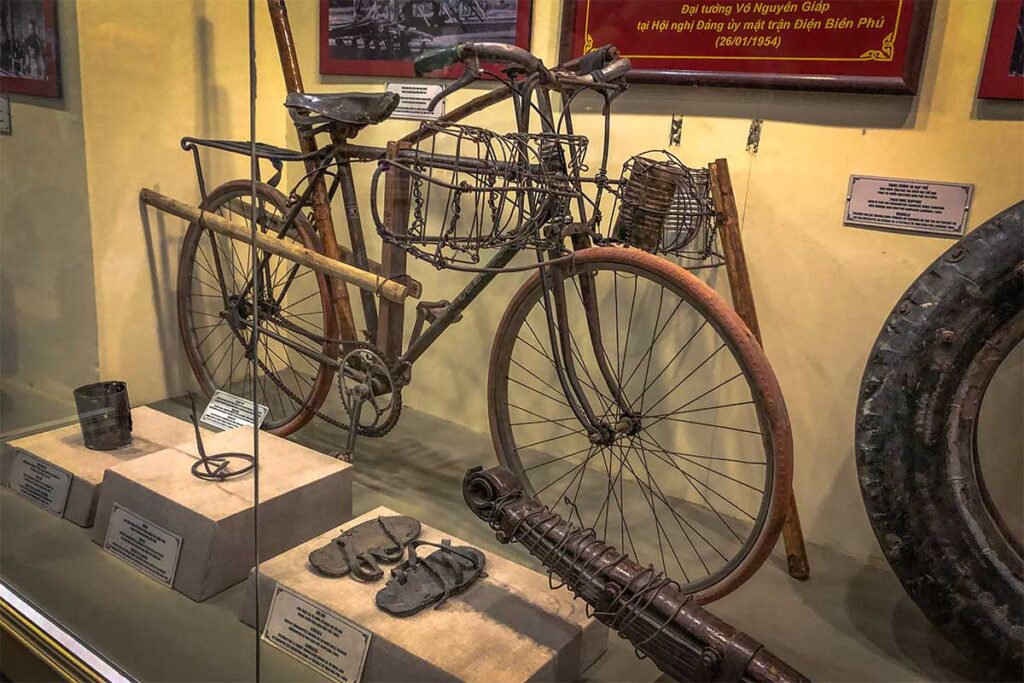
Several individual artifacts are placed throughout the exhibit, such as Ma Van Thang’s bicycle and Trinh Dinh Bam’s wheelbarrow—both used to transport supplies through rough terrain. There are also uniforms, personal belongings, and makeshift tools used by soldiers.
These small but moving displays help connect the history to real people. Labels are available in English, French, and Vietnamese, and are generally clear and informative.
4. Artillery and Military equipment
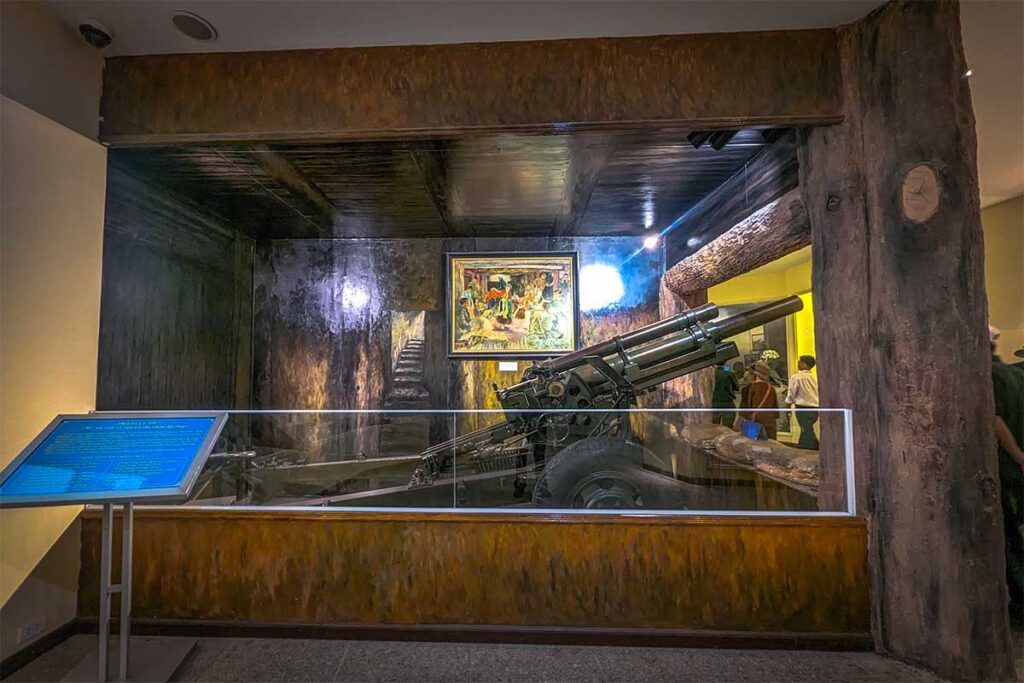
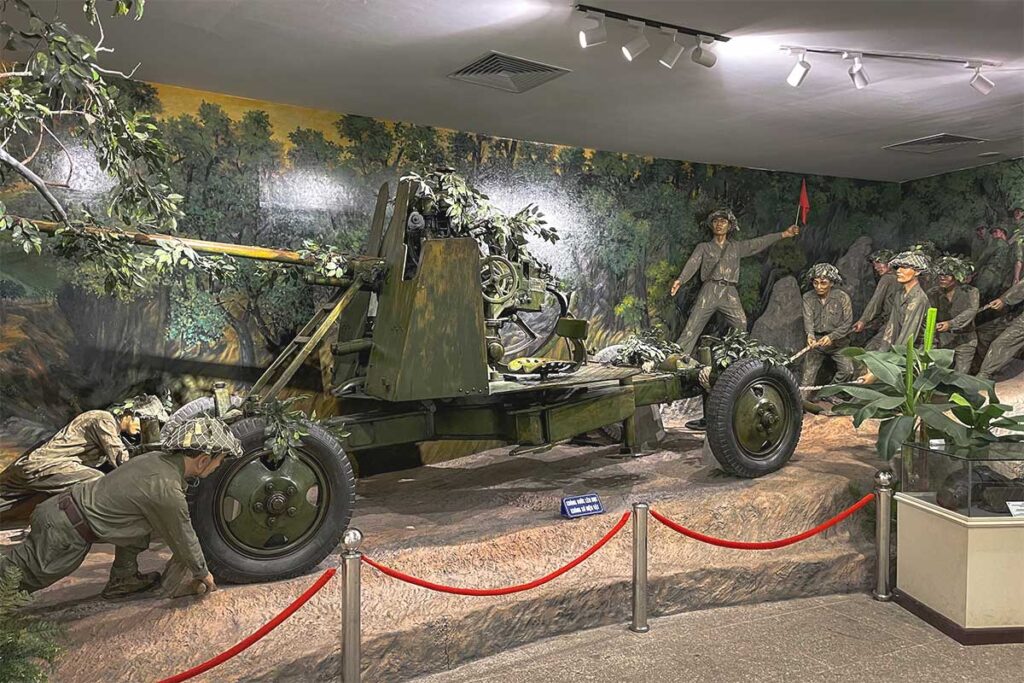
The museum includes several indoor displays of artillery, such as the 105mm and H6 cannons used in the battle. You’ll also find realistic dioramas of supply chains, showing how food, medical care, and weapons were moved across the mountains.
5. Short film room
There’s a small screening room that occasionally shows a short documentary explaining the historical context of the battle and its outcome. It can be helpful if you’re unfamiliar with the First Indochina War.
The film isn’t always shown and may depend on staff availability or group visits. Ask at the entrance if it’s running during your visit.
Opening hours and Ticket prices
Opening times
The Dien Bien Phu Victory Museum is open daily, but the hours vary slightly depending on the season:
- Summer hours
Morning: 7:00 AM – 11:00 AM
Afternoon: 1:30 PM – 6:00 PM - Winter hours
Morning: 7:00 AM – 11:00 AM
Afternoon: 1:30 PM – 5:30 PM
Note that the museum closes for lunch between 11:00 AM and 1:30 PM, so plan your visit accordingly.
During special periods—especially around April 30 and May 7 (National Reunification Day and the anniversary of the victory)—evening hours may be added on Fridays and Saturdays, from 7:30 PM to 9:00 PM.
Ticket price
- Ticket price: 100,000 VND per adult
- Free entry or discounts apply to:
– Students
– Veterans
– People with severe disabilities
– Those entitled to cultural benefits under Vietnamese law
Honest note: The entrance fee is a bit high by local standards, but still reasonable if you have an interest in military history or Vietnamese heritage.
Language availability: Most exhibits are labeled in Vietnamese, English, and French, and the translations are generally clear.
Visitor tips
- Time needed: Around 45 minutes if you’re just curious, but 1.5–2 hours if you’re really into history.
- Best time to visit: Come in the morning to avoid the midday closure (usually 11:00–13:30).
- Panorama room tip: You’ll need to take off your shoes, so wearing socks is a good idea.
- Comfort: The museum is air-conditioned and well laid out, a comfortable stop even in hot weather.
- Tour guides: Not required, but a local guide can add helpful context—especially if you plan to explore the battlefield sites afterward.
Nearby historical sites (Combine with your visit)
Since the museum focuses on the Battle of Dien Bien Phu, it’s a great starting point to understand the history before exploring the actual battlefield. Right around the museum, you’ll find several key sites that played a direct role in the 1954 campaign.
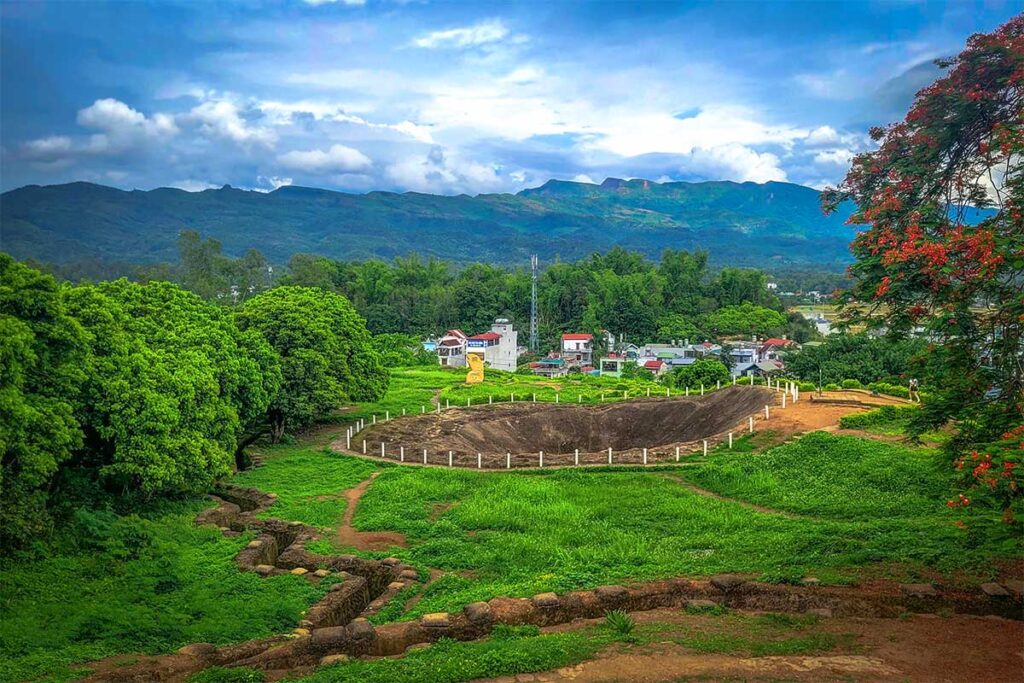
- A1 Hill – One of the fiercest battle zones, now partially preserved with trenches and memorials.
- De Castries Bunker – The former French command post, still intact and easy to visit.
- Dien Bien Victory Monument – A large bronze statue on D1 Hill, overlooking the city and marking the victory.
Travel Tip: Visit the museum first, then walk or drive to 2–3 of these nearby sites for a complete and meaningful half-day tour.
For a full overview of all major war sites—plus natural and cultural places to visit—check out our complete Dien Bien Phu travel guide, perfect to combine with your museum visit.
Is it worth visiting?
The museum is definitely worth a stop if you’re in Dien Bien Phu—especially before visiting the surrounding war sites. The stunning panoramic mural is the clear highlight, and the exhibits are well-organized with good English explanations. It’s not a huge museum, so don’t expect to spend too long here, but it gives a solid introduction to the battle.
How to get there
First, you’ll need to get to Dien Bien Phu City — see our guide From Hanoi to Dien Bien Phu if you’re not already there.
The museum is centrally located on Vo Nguyen Giap Street, right across from A1 Cemetery and close to other major historical landmarks. From most hotels in town, you can reach it easily by foot, bicycle, or taxi. For a full experience, combine your visit with nearby war sites for a convenient half-day itinerary.
